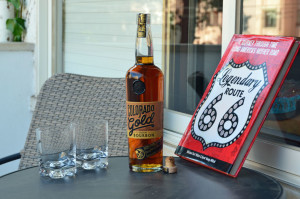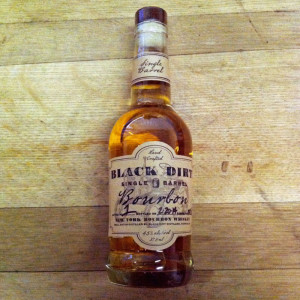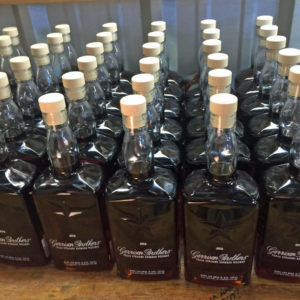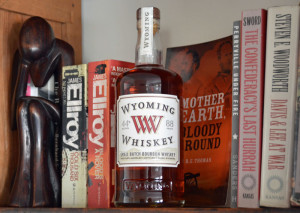By Richard Thomas
Even though whiskey-making has spread to most states of the Union, and much of that whiskey being made is Bourbon, Kentucky still dominates the industry. If you discount Tennessee Whiskey (admittedly a major exception, since Jack Daniel’s is the world’s second largest whiskey brand), 95% of the world’s Bourbon is made in Commonwealth of Kentucky. Although several hundred of America’s craft distilleries are making whiskey, many of these can produce only a single, 53-gallon barrel’s worth of new make spirit per day, so you would need hundreds of such distilleries to match the production output of just one of the big distillers of the Bluegrass.
The math, tradition and reputation combine to ensure that Kentucky will always be the byword for Bourbon, but other states boast respectable Bourbons of their own. They might not be able to match Kentucky for volume, but in some respects these newcomers are matching Kentucky for quality.
A. Smith Bowman (Virginia)
The original A. Smith Bowman Distillery was a post-Prohibition foundation in Fairfax County, Virginia, and until the 1950s it was the only legal distillery in Virginia. The distillery relocated to Spotsylvania County in 1988, and was acquired by Sazerac in 2003. Today the company that makes Virginia Gentleman Bourbon is now noted for its range of limited edition Bourbons, such as their High Rye and their Gingerbread Beer-Finish.
Black Dirt (New York)
This Bourbon began life at the Warwick Valley Winery and Distillery, and demand for it and the Black Dirt Apple Jack was such that the owners decided to build a separate facility in 2012-13. They release a new batch of single barrel, three year old Bourbon once every several months, contributing to New York’s bid to become America’s number three whiskey state (after Kentucky and Tennessee).
Colorado Gold (Colorado)
Colorado is another contender for becoming America’s number three whiskey state, due to the strength of offerings like Colorado Gold. In September 2016, this micro-distillery relocated from a remote town in western Colorado to Colorado Springs, a tourist town location certain to raise its profile. Having been around for nine years, Colorado Gold is one of the early entrants to the American micro-distillery movement, and it shows in the quality of their single barrel Colorado Gold Bourbon.
Dry Fly Bourbon (Washington)
Dry Fly is better known for its strong stake in the Wheat Whiskey sector, but they also released the first Bourbon made in the state of Washington. The chose a very grain-centered route, relying on a low-corn, balanced mash bill of 60% corn, 20% wheat and 20% malt. This whiskey is aged for at least three years in 53-gallon barrels.
FEW Bourbon (Illinois)
One of the “Four Kings” of the craft whiskey movement, FEW Spirits operates out of the Chicago area and have a noted Bourbon. Their production process is fairly traditional, except that their barrels from from a Minnesota cooperage using Minnesota white oak. Due to the shorter growing season up north, the grain of this wood is tighter, constricting the absorption of elements from the wood, such as vanillins, wood sugars, and especially tannins. This allows the whiskey to be aged a bit longer in smaller barrels without becoming cloying, an important point for a product drawing on small and regular barrel stock as FEW Spirits does.
Garrison Brothers (Texas)
The Lone Star State is another leading contender for standing as America’s number three whiskey state, and at the forefront of the Bourbon side of that claim is Garrison Brothers. Found due west of Austin, this distillery is devoted to just one thing: making fine Bourbon. In fact, they are one of the few outfits in the craft whiskey movement to have multiple Bourbon brands not based on a secondary cask finish: Cowboy Bourbon, Vintage and Single Barrel. Garrison Brothers have mastered putting the fierce Texas climate to work in maturing their whiskey, carefully choosing their barrel stock and squeezing the most out of that wood. They pay a high price in Angel’s Share, but the results are worth it.
Prichard’s Distillery (Tennessee)
Prichard’s dates back to a time when there was no craft distilling movement in America, dating to 1997. Master Distiller Phil Prichard is fiercely independent, making a whiskey that he claims is based his family’s heritage, based on a white corn mash and using pot stills. Because it does not use the Lincoln County Process, their Tennessee Whiskey is technically a Bourbon (Prichard’s was grandfathered in under the 2013 state whiskey law), and the distillery has two outright Bourbons as well.
Watershed Distillery (Ohio)
Much to the dismay of my Mom, the Buckeyes make a pretty nice craft Bourbon. Watershed’s Bourbon is either a four-grain or a double wheater depending on how you look at it, because two of the grains in the mash bill are wheat and spelt, and spelt is another kind of wheat. It’s mostly aged in 10- and 30-gallon barrels, with whiskey from 53-gallon barrels coming into line.
Wigle Organic Bourbon (Pennsylvania)
Like Virginia, Pennsylvania is an old distilling state making a comeback. While the Keystone State’s whiskey tradition is rooted in Rye Whiskey rather than Bourbon (so much so they have their own style of Rye). Even so, the Pittsburgh-based Wigle Distillery has based their whiskey line more on being organic than traditionally Pennysvanian. Thus, they have the expected Ryes, but also Wheat Whiskey and organic Bourbons as well.
Wyoming Whiskey (Wyoming)
This distillery was one of the early consulting projects of former Maker’s Mark Master Distiller Steve Nally, now with Bardstown Bourbon Company. The distillery now continues without him under its founders, and has been getting better and better. Their core small batch Bourbon has continued to improve as their base stock gains in maturity, and the distillery has expanded its line up with a range of limited release whiskeys.
 The Whiskey Reviewer A World of Whiskey, Poured Every Weekday
The Whiskey Reviewer A World of Whiskey, Poured Every Weekday




